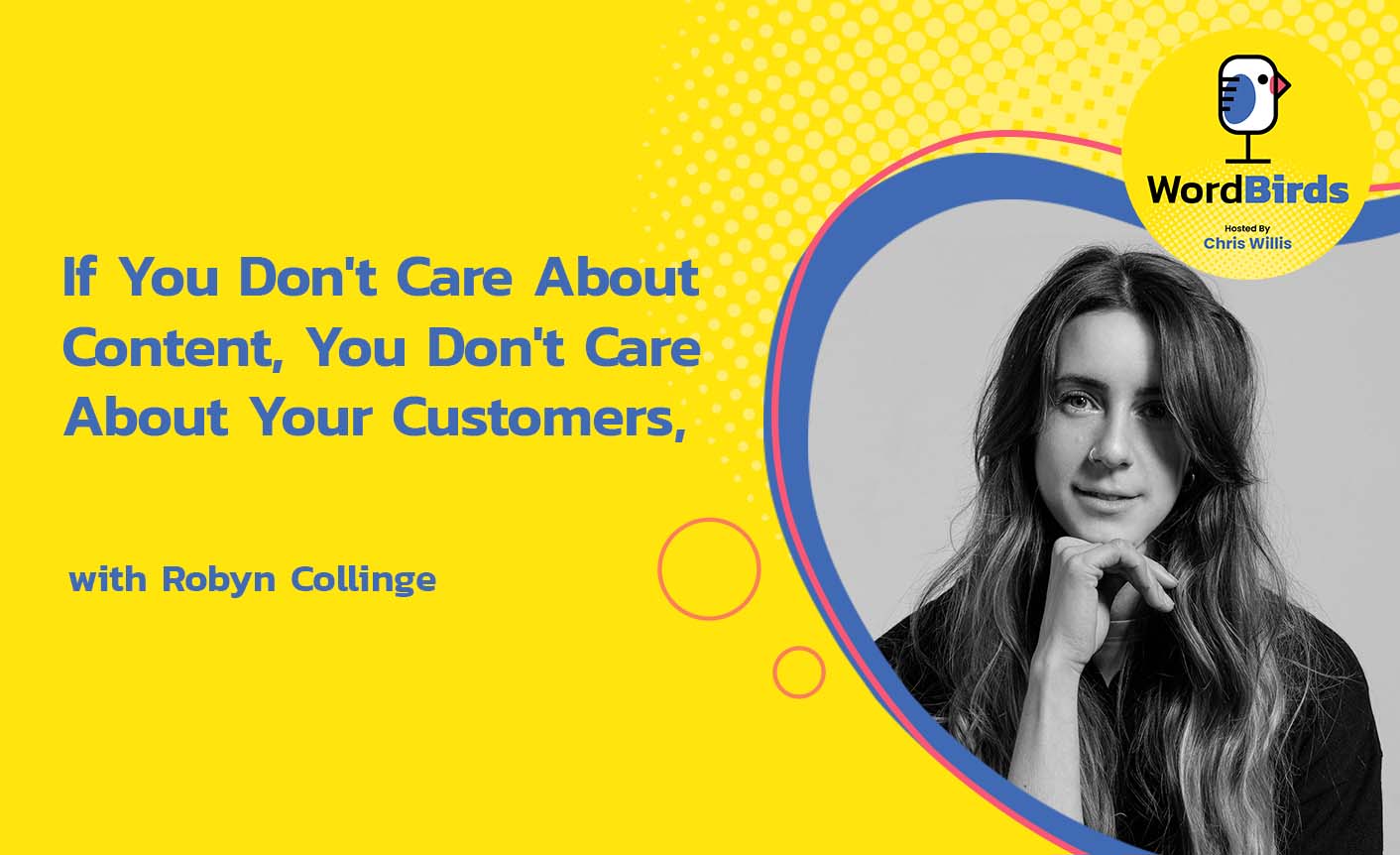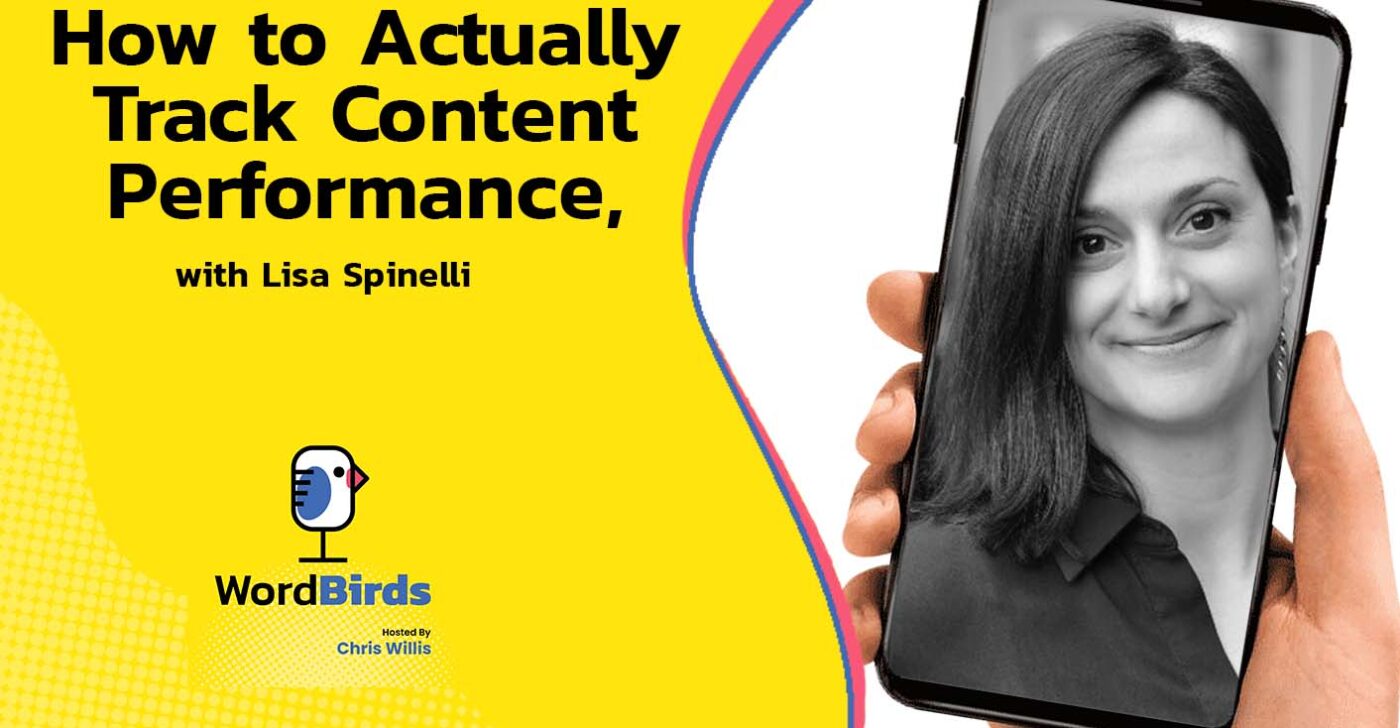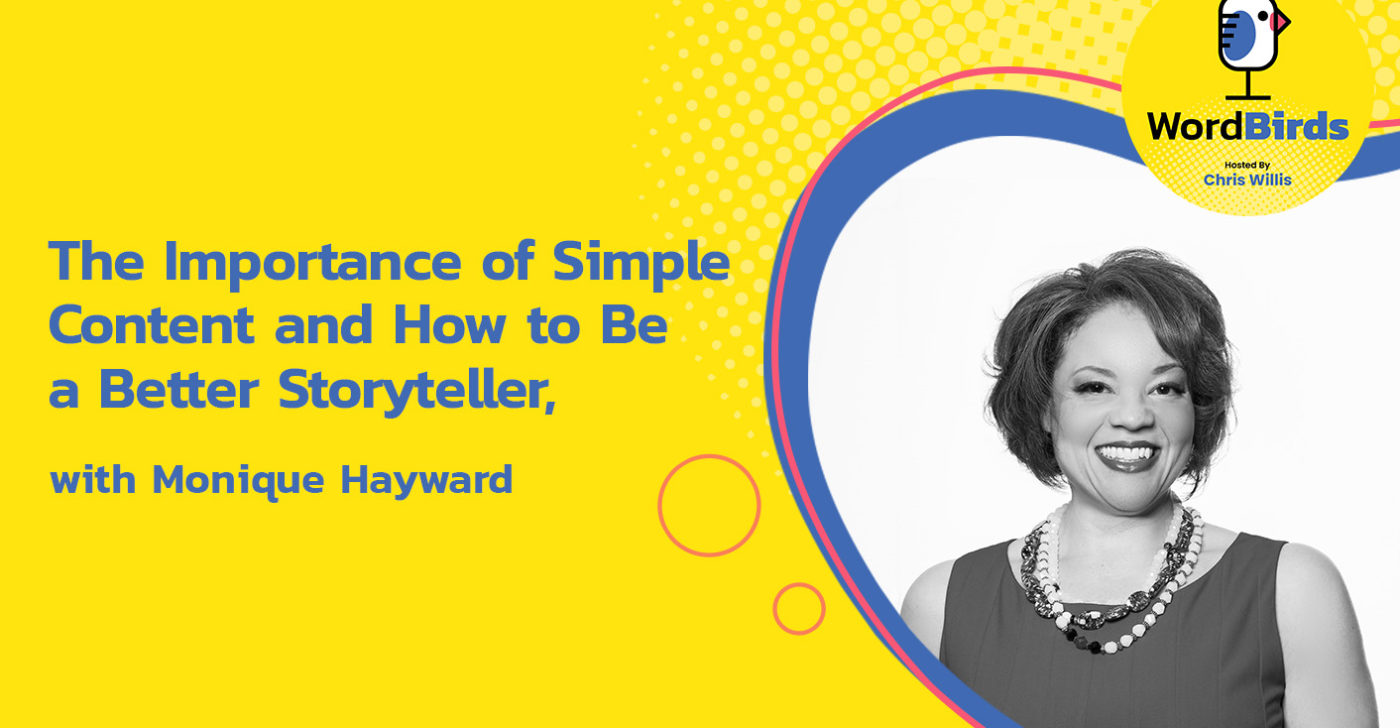Content creation directly reflects what your company stands for and believes in. For Robyn Collinge, those who don’t care about their words probably don’t care about their customers.
In this conversation with Chris Willis, she talks about her remarkable work in WeTransfer. She looks back on being the company’s first copywriter, how they gauge audience engagement through the materials they produce, and how they inspire people one content piece at a time.
Watch the episode here
Listen to the podcast here
Read full episode transcript
On the show, we have Robyn Collinge. Robyn is the Senior Creative Copywriter at WeTransfer. We’re going to talk about her divorce and reconciliation with the Oxford comma. We’re going to talk about how if you don’t care about words, you probably don’t care about your customers. We’re going to look at the remarkable work that she is doing inside WeTransfer and WePresent. Let’s sit back and get some insight from the flock.
Robyn, welcome to the show.
Thank you so much for having me.
I’m excited to have you here because I use the product that your company builds. Robyn is here from WeTransfer and WePresent. Starting off, I want to learn a little bit more about you, and I heard a thing. A way that you described something was that you are divorced from the Oxford comma. I’m fascinated. What does that mean?
If I’m going to be truly honest, it was a bit of a make myself seem interesting while I was freelancing. I’m sending out my resume to a lot of companies and pitching a lot of projects. It would always be a great conversation starter.
There is a truth in it. For a long time, I used the Oxford comma, and then I fell out of love with it. There’re no real hard and fast rules. Some people do it and some people don’t. I stopped doing it. Now I work for a company where the Oxford comma is in our style guide. I had to re-adopt it. I find myself now using it outside of work as well. It is controversial but it is a bit of a lie. It is not relevant anymore because I have adopted the Oxford comma.
It is a fantastic position to take though. It is like the two spaces after the period. Either you do it or you don’t. You call your shot and stick with it.
I apparently didn’t stick with it. I’m quite fickle.
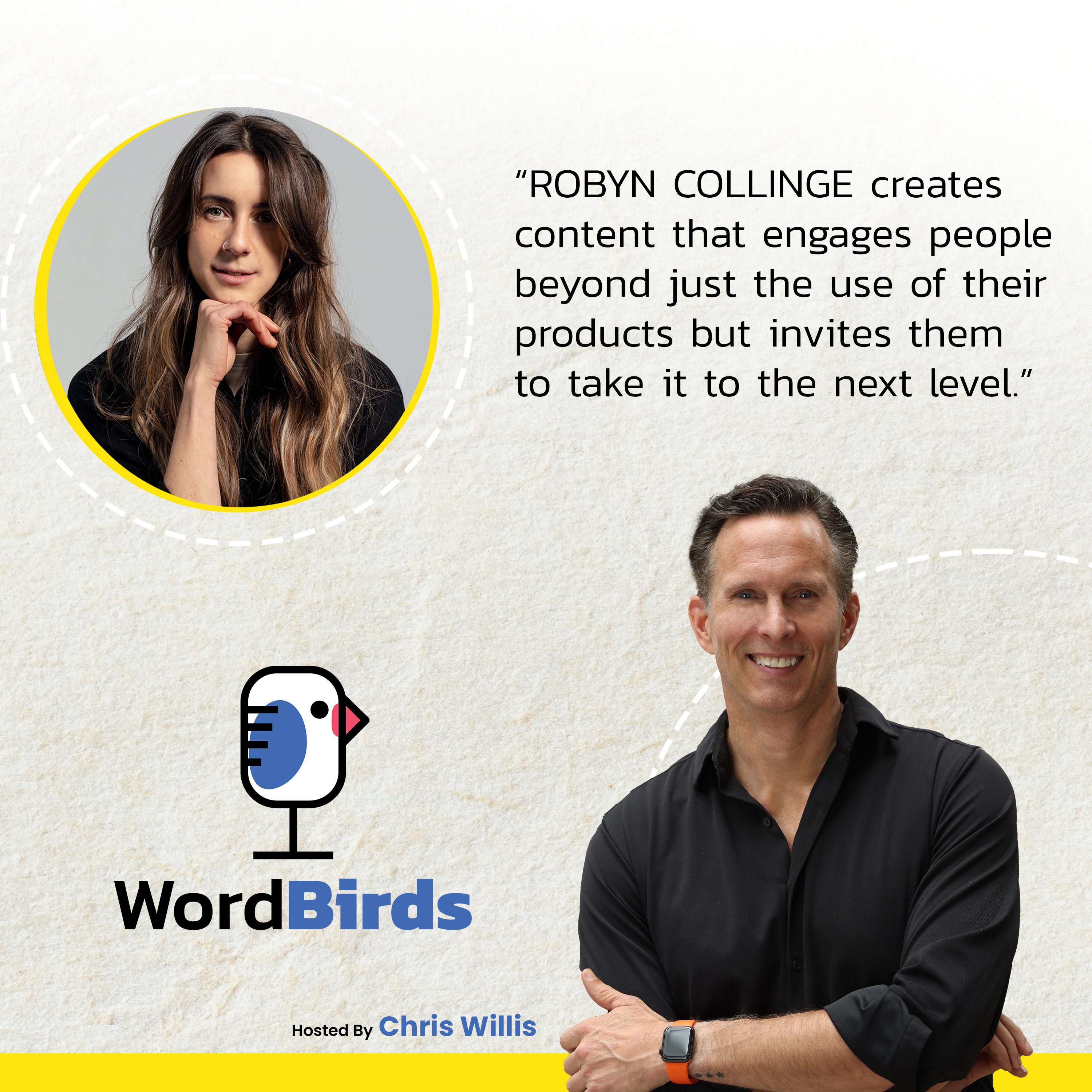
Jumping into that, what is your role inside WeTransfer and WePresent? How do you live with that Oxford situation?
To put my history at WeTransfer into a nutshell, I joined the company four and a half years ago. I was the company’s first-ever copywriter. They had never had a copywriter before. For anyone who doesn’t know, WeTransfer is a file-sharing platform. Most people know WeTransfer.com as a free and easy way to share big files. We have been around since 2009. For those first 8 or 9 years, I wasn’t a copywriter. It starts as a vibe. People are just pitching in and doing their own stuff wherever they can.
When I first joined the company, they had no idea what to do with me. No one knew what a copywriter was. I was spread across everything. I would be doing marketing like emails and landing page stuff, social media, but also writing for the product itself like UX flows and things like that. I also do any internal stuff that needs to be done. Over time, I convinced the company of the value of investing in copy and words. I’m a big advocate that if you don’t care about the words you are writing, you don’t care about your customers. Quite often, your words are the way you are interacting with people who use your product and tools.
Since then, we have now grown into this whole team of writers, which is great. We have our own dedicated product writers that work on WeTransfer, the product. We also now have several other tools under the WeTransfer umbrella. They are more technical UX writers. We have advertising copywriters who work with our external advertising clients.
When you go to WeTransfer.com, it’s the big beautiful background adverts. We will be working with Nike, Gucci, Adidas, Netflix, and the big names to come up with ads to run on the site. We have people like me who are brand writers. I work on anything that comes from WeTransfer, the brand itself. That could be product marketing and brand marketing moments, but also things like the content we produce as a company, which is, as you already mentioned, WePresent.
You have a business here that spreads itself virally. Somebody sends a file, somebody else gets it, and they are introduced to your product. The marketing aspect of this is less intensive than it would be at a company that nobody has ever heard of that doesn’t spread virally, which would make you feel like content wouldn’t be the top of mind for the business, but it sounds like it is.
I like the way that you phrase it, “If you don’t care about your words, you don’t care about your customer.” You have come from a space where you were the entire customer experience from a content standpoint to finding yourself in a category and seeing that all grow out. How important is content to the business?
When you look at WePresent, if people haven’t heard of it, it is a digital arts platform belonging to WeTransfer. It was never started as content marketing. That was never the goal with it. A lot of people don’t know about WeTransfer that it is always given back to the creative community. From the beginning, when it was first formed, 30% of the advertising of real estate, these big backgrounds you see on WeTransfer.com, was given away and donated to creative. We are helping out friends, artists, creatives, companies, and charities that are doing interesting things. We give away that real estate for free.
Over time, billions of dollars worth of advertising have been donated. It is because creativity is super important to the company. We describe ourselves as a company that was made for creatives by creatives. The two guys who founded it are still creatives. They worked in the advertising and design industries. They built the tool out of a need to solve a problem like when they were sending big files and wanted to send big files from agency to agency, and get it done in a way that was free and easy.
Because we have always given away many of these wallpapers and donated them to artists, we then used WePresent, or at the time, it was called This Works. It was a blog where you would click on the wallpaper or what we call a big background image on WeTransfer.com. It would take you to a link where you could learn more about that artist or that creative project.
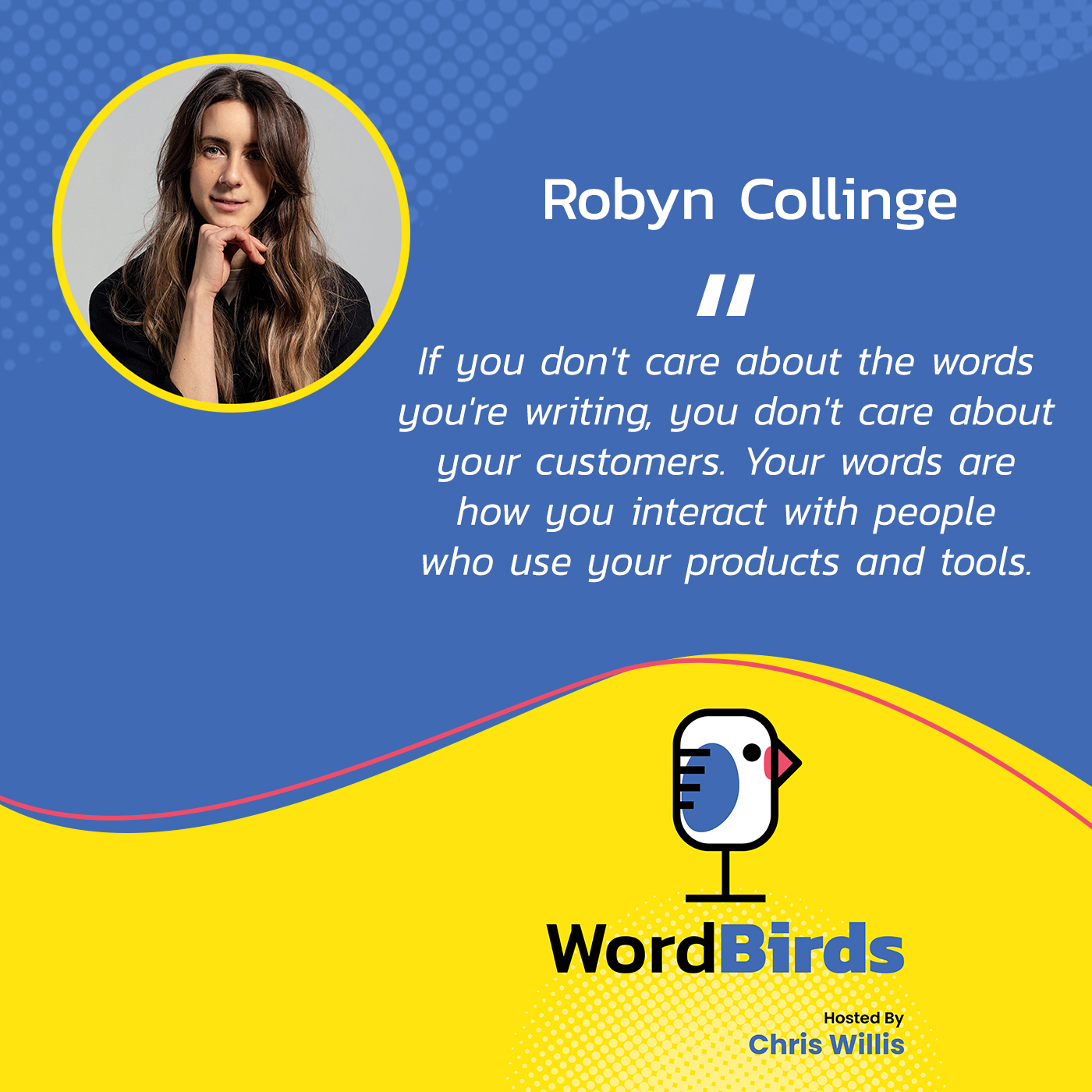
It was born from there. We have always given back to the creative community. This was a way for people to see. If they saw an image or a piece of artwork they liked, they could click and know that they could go on to read a bit more about that artist. It organically grew into this big creative platform where now we are working with huge names in the industry and commissioning cool films, exhibitions, and photography series. It is always about giving back to the community and people who use WeTransfer.com. It is a nice cyclical nature.
I don’t feel like that is what you would expect from a company like this. It is using content to surprise and engage analysts to use delight a lot, if you want to talk about customer delight. The primary focus of the content your company is creating is there is a product and it works, but how do we keep people engaged beyond the use of the product? It is through this content that takes the product to the next level.
A nice thing about WePresent is people can use it if they are looking for inspiration. The idea is that maybe someone can scroll through the site. It will spark something in them to go on and have an idea of their own or help them think differently about something that they were stuck on or something they are working on, and they can go back to it. It also acts as if you have been working hard on this design file. You are in version four of the final version. You have been through the wringer with this work. You go to upload it to the site to send it, and you need a minute to breathe. You can also click through to WePresent and sit back and enjoy it. It does serve its purposes, which is nice.
It does have to create challenges for you as somebody that creates this content because you are building for a wide audience. You don’t have just a specific persona you are building for. How do you manage the range of content that you need to deliver to engage this audience?
We have a dedicated team. I’m by no means the expert on the ins and outs of that, but we have a curation team. What I admire about the work is everything they do is about diversity. We feature a lot of different types of work on the site because creativity means a lot of different things to different people. It can be photography, music, film, illustration, design or architecture. It is broad on the topic that it covers.
It is also not just about showing cool projects. It is about speaking to the artists and digging into their creative process, finding out how they get inspired, what they do when they come across roadblocks, and how they can get through a creative funk.
Many of the readers and users of WeTransfer identify as creatives. We all know the frustrating process of creativity, its highs and lows, and all kinds of mixed emotions. Banging your head against the wall and caffeinating yourself. There are many ways people deal with and handle the creative process. We tried to be something for everyone.
Did you know early on that you were going to be creating content for people that are like you?
I guess so. Within the company, a lot of people who work there are creatives. We are still a tech company. The majority of the employees are engineers and product designers, and work in a more technical and less creative field. Everybody still has an interest in creativity.
In the teams that I sit on, everyone is passionate about creativity and the creative process. Everybody, globally, wants to find the secret to a good idea. If we all knew what the magic was to bring an idea to life when you needed it, that would be $1 million.
It’s exciting that you are in a SaaS software environment, but you’re getting to create a more interesting and creative persona that on the one hand, would be excited about your content. The flip side is it might identify when your content isn’t right for them. How do you gauge feedback from that audience as to whether you’re hitting the mark?
A copywriter's number one rule is to write like they speak and make sure everything they say is clear. Click To TweetIt’s hard to say because I’m not on the team that works directly with the numbers and data behind everything. Everything we put out generally gets a great reception. You’ll get some people who’re featuring Pride month. It’s not necessarily just Pride month. We don’t celebrate it because it should probably be all year round. We’re not afraid to work with artists that maybe do something a bit more provocative in their work.
When that’s getting advertised on a wallpaper that’s being seen by millions of people around the world, not everybody is going to be happy with seeing images of two guys kissing or something that isn’t a big deal at all. We will get emails from people being like, “I can’t look at this while I’m uploading my files.” I guess you have to educate them. Take the good with the bad, focus on what we want to do, and keep going on.
One of the things that we have been seeing come into alignment in the content space is the idea of what you say and how you say it matters in the way that content is gauged effectively. The tone of voice, clarity, consistency, emotion, and inclusiveness all play into how your content is viewed, accepted, and engaged with. Do you see that in your world?
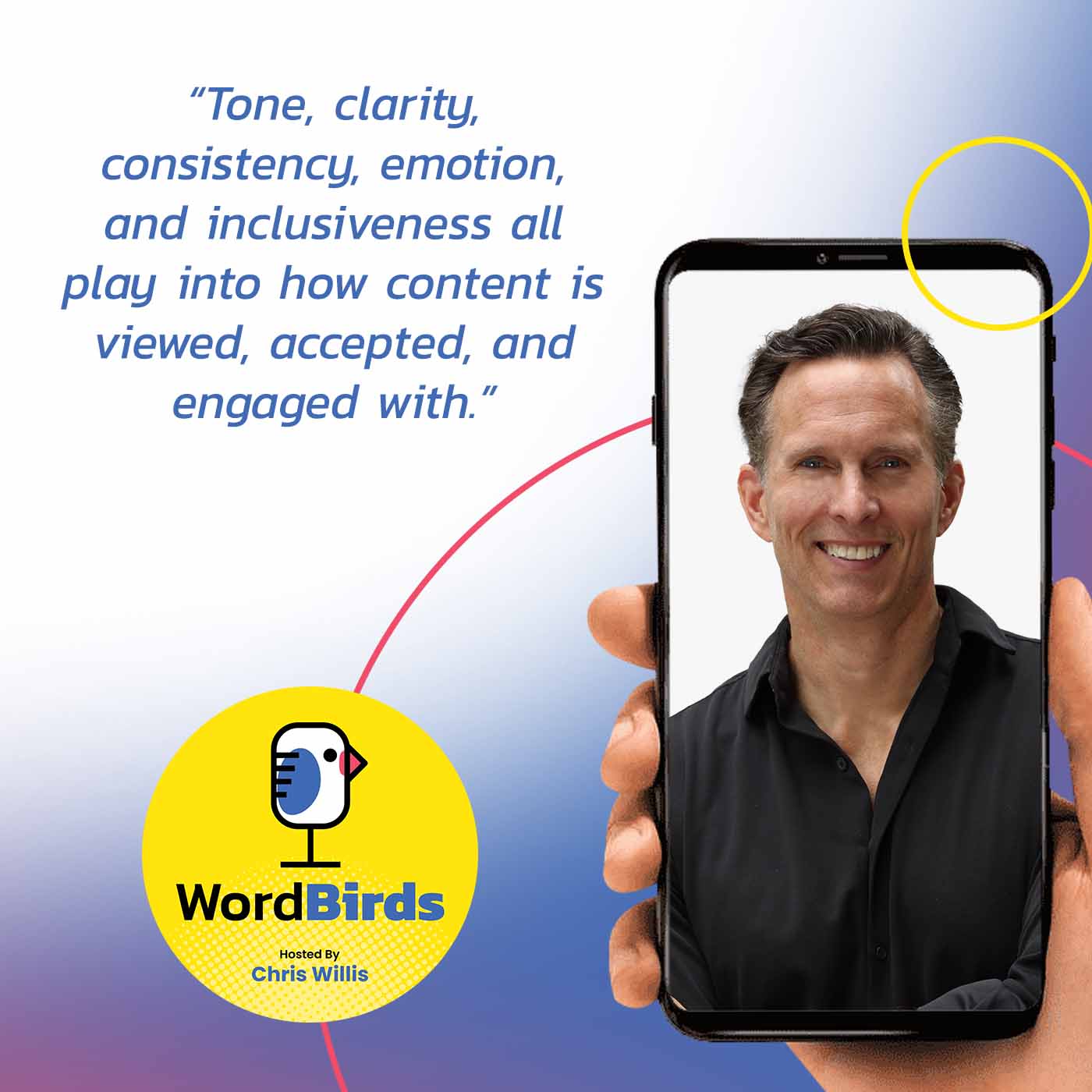
Yes, for sure. As a copywriter, my number one rule is always to write like I speak to make sure everything is clear. I have a passionate hatred for business jargon and acronyms. Anytime anyone tries to use an acronym in a meeting with me at work, I will be like, “Sorry, can you explain what that means, please?”
I have been lucky enough to work with brands over my career that have had quite a straightforward, clear and fun, witty tone of voice, which is very much the stuff I write in. That’s the tone of voice I created for WeTransfer when I was first brought in back in 2019. I had a train of thought there that is completely cool.
One thing that’s useful at WeTransfer is for the free product, at least, our audience is global. We have about 80 million people using the product every single month. We don’t have a persona and average age of the user. All we know is that about 70% of our users identify as creatives. They are working in creative fields, but they can be of any age. Our average age user is in their 40s.
I know personally that my brother-in-law’s father is an architect. He uses WeTransfer.com. Quite often, family gatherings and stuff will be chatting away about WeTransfer and what is going on. He is a man that is in his ‘60s. He is tech savvy but probably not native the way that Gen Z and Millennials are with tech. I like to keep him in mind when I’m writing stuff. If I’m writing stuff that I know that is going to be on the free product and seen by millions of people, I think, “If I called Steve now and said that to him, would he understand this?”
I found that it is a useful hack for me to keep Steve in mind. I feel like everyone should have a Steve that when they are writing to be like, “If I stopped and said that to him.” It’s the classic, “If you said this to your parents or grandparents, would they understand it too?” Especially when you are working at a tech company, it’s easy to get caught up in your own bubble because you are working close to the product that you think, “Everybody understands this weird technical word,” but they don’t. Speaking clearly and bringing simple language are super important.
Copywriters should be able to write technical stuff that can be easily understood even by older people. Click To TweetLooking forward, what’s one initiative that you want to focus on to take all of this to the next level?
In 2021, WePresent did win its first Oscar, which was a huge deal. We commissioned a short film that went on short in the 2022 Academy Awards. If you haven’t seen it, it is called The Long Goodbye. It’s heartbreaking and powerful. It’s such a great film. It’s eleven minutes. I recommend anybody and everybody to watch it.
Once you win an Oscar, it is hard to know what to do next. As a company, we did also become a B Corp in the last couple of years. Sustainability and making sure we are doing the right thing in the tech space to make sure we aren’t adding unnecessarily to climate change. It’s a big thing for us. We are looking at things like how we can offset people’s carbon when they are sending files. What can we do to use our B Corp status and shout about that and make a difference in the tech space? As a creative company, we hopefully come up with some nice creative solutions for that.
We’re also on that journey. We’re headed down the B Corp plane. We have done things in the past from a carbon standpoint. We’ve worked with tree-planting organizations and a number of different approaches. Bringing tech into the future and being a more responsible corporate player is the right thing to do.
It has to be the future. At this point, there’s no better option.
Robyn, thank you for being on. If somebody wants to follow up with you afterward to continue this conversation, what’s the best way to find you?
You can find me on LinkedIn. I’m a bit more active on Twitter. If you search my name, Robyn Collinge on Twitter, you will find me.
Thank you very much for being on the show. Have a great rest of your day, and thank you.
Thank you so much for having me.
Important Links
- WeTransfer
- WePresent
- Robyn Collinge – LinkedIn
- Twitter – Robyn Collinge
- WordBirds – LinkedIn
- WordBirds – Home page
About Robyn Collinge

As a Creative Copywriter, Robyn uses words to make people buy, sell, laugh, yell, gasp, think, and — occasionally — drink. She had written for brands like Adidas, Headspace, Brooklyn Brewery, and Disney. But currently, she is in-house at WeTransfer where she is responsible for all things words and branding (and tries her hardest to sneak early-2000s pop lyrics into everything she writes). Aside from that, she designed escape rooms, edited magazines, and one time she auditioned to play a zombie extra in World War Z. She didn’t get a callback but kinda take it as a compliment.
